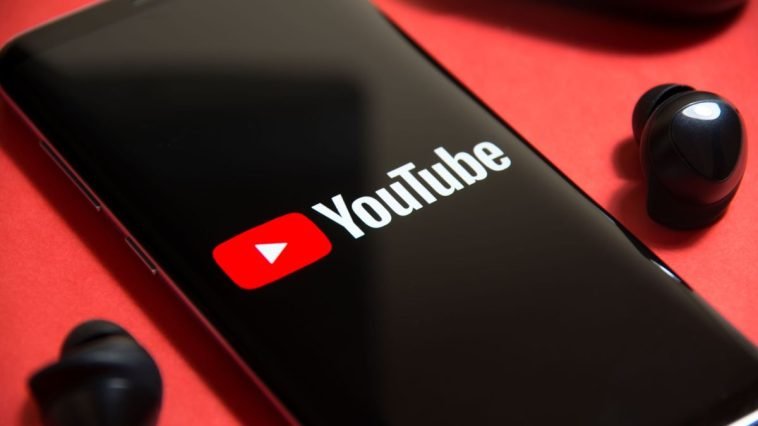Making money on YouTube is one of those things that sounds super simple — post a video, rack up some views, and watch the cash roll in.
But the reality? It’s a bit more complicated than that. One of the most common questions people ask when thinking about starting a channel or trying to grow one is:
“How much does YouTube pay for 1,000 views?”
It’s a good question — and the honest answer is: it depends. But I’ll break it all down for you in a clear, simple way so you know exactly what affects your earnings and how you can make more from your content.
Let’s get into it.
First, a Quick Look at How YouTube Pays Creators
YouTube makes money mostly through ads, and if you’re in the YouTube Partner Program (YPP), you get a cut of that.
YouTube pays creators 55% of the ad revenue from their videos. That’s pretty solid. But not all views are treated equally.
So when people ask, “How much is 1,000 views worth?”, it’s really about how much advertisers are paying to show ads on your content — and that varies.
What Is CPM and RPM?
Let’s keep this easy.
CPM (Cost Per Mille) – how much advertisers pay per 1,000 views (mille = 1,000).
RPM (Revenue Per Mille) – how much you earn per 1,000 views after YouTube takes its cut.
So, if an advertiser pays $10 CPM, you’d get $5.50 after YouTube takes its 45%. That means your RPM would be $5.50.
But here’s where it gets tricky — not every view has ads. Some viewers have ad blockers. Some skip ads. Some videos don’t qualify for ads at all. So your actual RPM might be lower than expected.
So, How Much Do You Get for 1,000 Views?
On average, YouTube pays creators between $1 and $5 per 1,000 views in RPM. In some niches, it can go higher — sometimes up to $10 or more — and in others, it can be way lower.
Here’s a breakdown:
| Niche | Average RPM |
|---|---|
| Finance / Investing | $6 – $15 |
| Tech Reviews | $4 – $8 |
| Education / Tutorials | $2 – $6 |
| Vlogs / Lifestyle | $1 – $3 |
| Gaming | $0.50 – $2 |
So if you’re making videos about stock tips, you’ll earn more per 1,000 views than someone doing prank videos or gaming highlights. That’s because advertisers in finance are willing to pay more for clicks.
Real Examples From Actual YouTubers
Here are a few real-world examples (numbers pulled from public YouTube income reports and creator disclosures):
Ali Abdaal (productivity/education) earns around $5 to $7 RPM on most videos.
Marques Brownlee (MKBHD) (tech) has reported CPMs as high as $20, meaning RPMs around $11.
Smaller vloggers or lifestyle creators often see $1–$2 RPM, especially early on.
If you’re curious to dig into real data, check out this great video by Nate O’Brien, who shared how much he made for 1 million views:
How Much YouTube Paid Me for 1,000,000 Views
What Impacts Your Earnings?
A few key things change how much money you make per 1,000 views:
1. Your Niche
Finance, health, business, and tech often pay more. Vlogging, entertainment, or comedy pays less because the ads aren’t as valuable.
2. Audience Location
Views from the U.S., Canada, UK, and Australia usually bring in more money. Views from India, Philippines, or Latin America may bring in less.
3. Viewer Behavior
Do people watch the whole video? Do they click on the ads? Do they skip? All this affects your ad revenue.
4. Video Length
Videos over 8 minutes can include multiple ads. More ads = more chances to earn. If your video is just 3 minutes, you’re probably only getting one ad (or none at all).
5. Seasonality
Ad rates are way higher around Q4 (October–December) because brands are spending big for the holidays. In January, it drops a lot. That’s totally normal.
How Can You Make More From 1,000 Views?
If you want to make the most of your views, it’s not just about uploading and hoping for the best. Here’s what I recommend:
Focus on Higher-Paying Topics
If you’re passionate about multiple things, lean into the one with better ad rates. Finance, productivity, education, tech, and career advice tend to pay better.
Attract a U.S.-based Audience
English-speaking audiences in high-income countries are more valuable from an ad perspective. Subtitles and SEO optimization help reach them.
Make Videos Longer Than 8 Minutes
This gives you the option to place more ads in your video (mid-rolls), which can double or triple your revenue.
Build Multiple Income Streams
Don’t just rely on ads. Add affiliate links, sell digital products, do brand deals, or offer memberships. Even small creators can make good money with a mix of income sources.
Extra Tips to Boost Your YouTube Income
Use affiliate links in the description (tools, gear, courses).
Get into brand partnerships once you have steady views.
Promote your videos outside YouTube — blog posts, Pinterest, email lists — to keep your views growing.
Double down on your best performers — look at your top 5 videos and make more like them.
FAQs
Do I need 1,000 subscribers to make money on YouTube?
Yes — to join the YouTube Partner Program, you need 1,000 subscribers and 4,000 watch hours in the last 12 months, or 10 million Shorts views in 90 days.
What if my video goes viral but I’m not in the Partner Program?
You won’t earn from ads. But you can earn money in other ways, like promoting affiliate products or linking to a digital product or website.
Is YouTube ad revenue the same every month?
Nope. It changes based on advertiser demand, seasons, and how your viewers interact with the content. December tends to be the best. January is usually the slowest.
What happens if people use ad blockers?
You don’t earn anything from those views. That’s why not every view = money.
Bottom Line
Getting paid on YouTube is a mix of strategy, consistency, and understanding how the platform works. For 1,000 views, most creators earn somewhere between $1 and $5, but with the right content and a good audience, it can be much higher.
If you’re creating videos just for fun, the money might be a bonus. But if you’re thinking long-term and treat it like a business, those small numbers can really add up over time.
So the real question is…
What kind of videos will you make to turn 1,000 views into something more?





GIPHY App Key not set. Please check settings